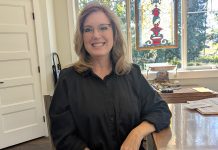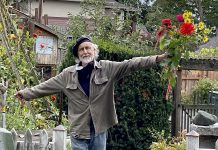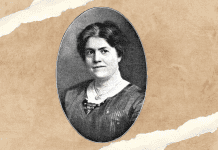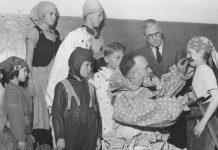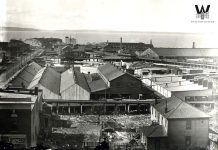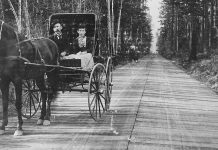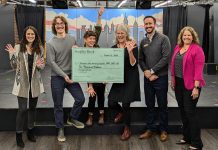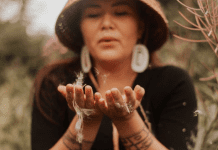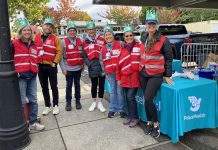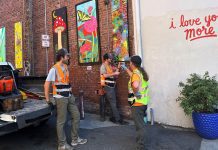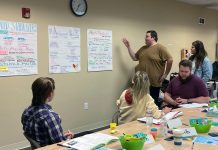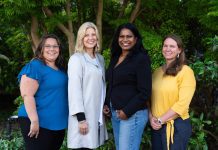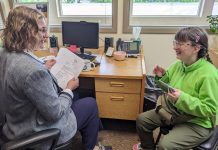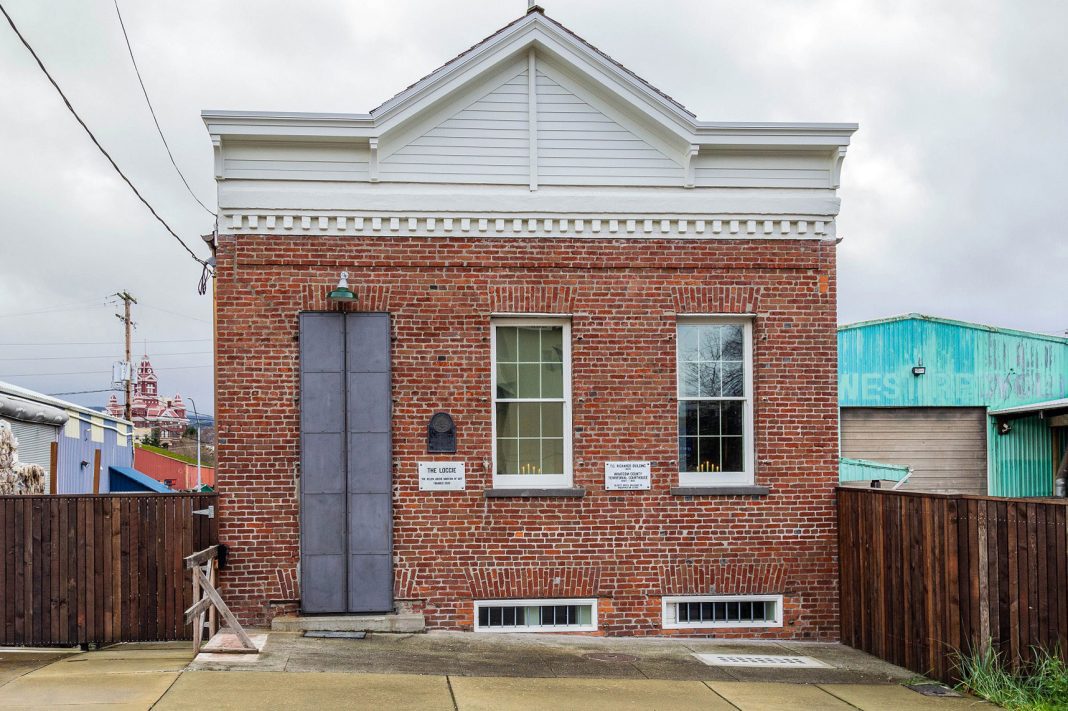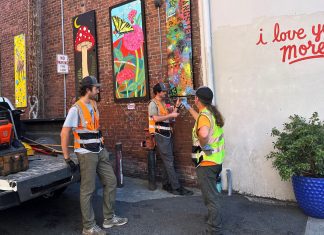For centuries, “secret societies” have inspired intrigue. Organizations with private meetings, exclusive membership, and in-group rituals may seem arcane, even suspicious, to the uninitiated. But as Whatcom County’s history shows, fraternal organizations have deep investments in public life.
Bellingham’s emergence from its four original towns coincided with the “golden age of fraternalism.” Organizations such as the Freemasons, International Order of Odd Fellows, Knights of Pythias, Benevolent Protective Order of Elks, Knights Templars, and Woodmen of the World captivated the region and nation throughout the late nineteenth and early twentieth centuries.
“It was the mainstay of social life,” says Whatcom Museum Archivist and Historian Jeff Jewell. “It’s pre-media, it’s pre-television, radio, and all the rest. People had more time for social life.”
Whatcom County’s fraternal organizations dovetailed into its thriving culture of social clubs — intersecting with Aftermath Club, Cascade Club, Rotary Clubs, Lions Clubs, and more. They funded institutions such as orphanages, charities, and funerary rites.
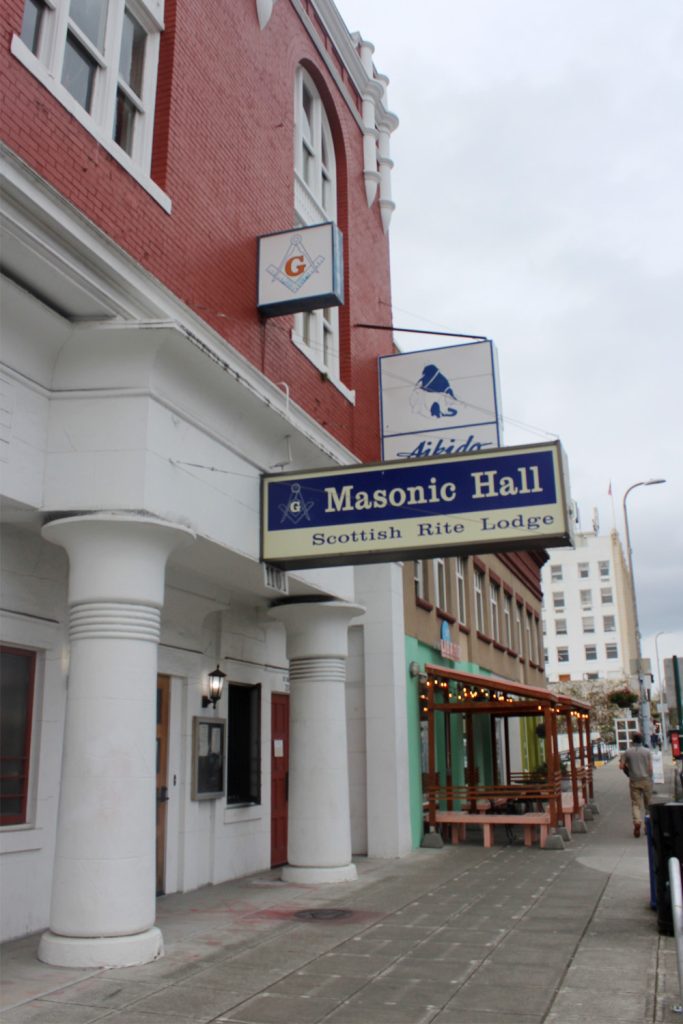
“De-mystified, they provided social connection, ritual, and, most importantly, insurance,” Jewell says. “They buried you at minimum and, in many cases, provided for your widow and children after you were gone. Fraternal groups provided a safety net and a social outlet, and most had a philanthropic component. Depending on the group in question, there was a Ladies Auxiliary and even membership for one’s children. Some were exclusive along class divides, though Bellingham wasn’t a big enough city to get too carried away with that.”
Fraternal Philanthropy
Most of Bellingham’s fraternal organizations started in the 1880s and 1890s, divided between north and south for New Whatcom and Fairhaven. Even Lynden, Blaine, Ferndale, Nooksack, and Sumas had lodges with membership over 50 or 100.
Lottie Roeder Roth’s History of Whatcom County describes fraternal organizations’ public-facing philanthropy. The Masons bid farewell to World War I servicemen reaching Fort Casey as the Masonic Fife and Drum Corps, later loaning “beautiful standards of the Allied nations” for Armistice Day. The Knights of Pythias led a band in Independence Day celebrations, and the Elks ran a Red Cross drive for $40,000.
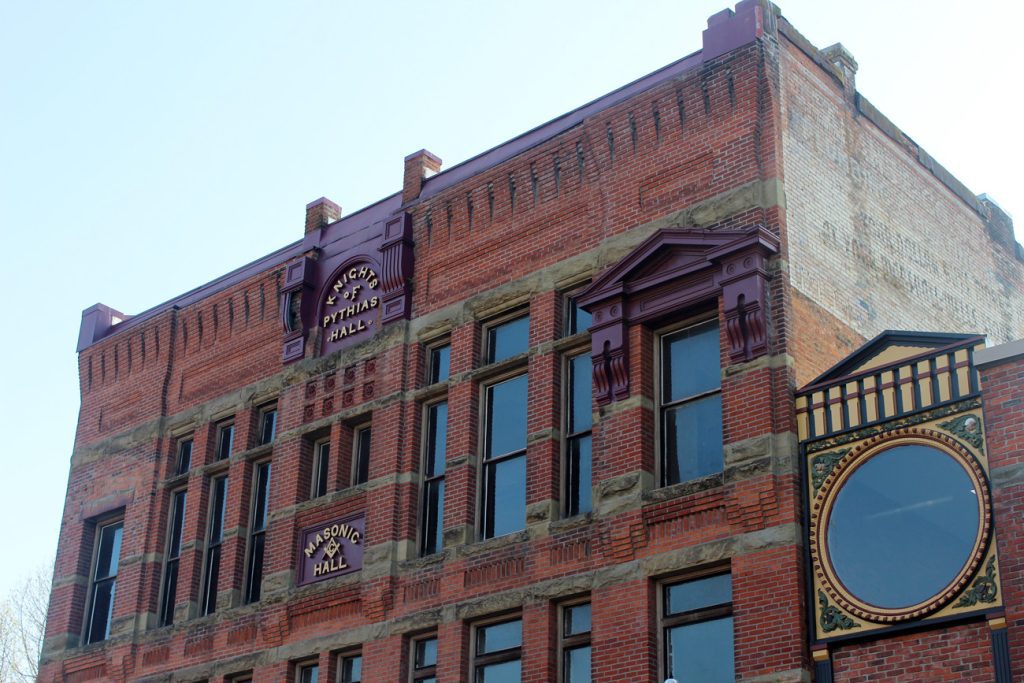
“They were certainly participants in the Tulip Festival, so each one of these groups had a large float,” says Jewell, “which was our big foray into motor tourism in the introduction to the automobile age.”
Many organizations enjoyed overlapping membership from Bellingham’s leading entrepreneurs.
“Almost all the captains of industry and business were members of some fraternal order,” Jewell says. “1915, you had Humphrey Griggs, head of the Elks. And they had a big state convention here, which was a big deal.”
(Architectural) Masonry
Fraternal organizations created and occupied many of Bellingham’s prominent historic buildings.
The B.P.O.E. Building at 1414 Cornwall Avenue has been praised as one of the most impressive fraternal lodges in Washington. Built by architect William Cox in 1912, its Neo-Classical Revival style includes blond bricks, sandstone steps, and arched windows. The building hosted first-floor offices and a second-floor meeting room and kitchen. In the basement, members enjoyed a gymnasium, billiard hall, and bowling alley.
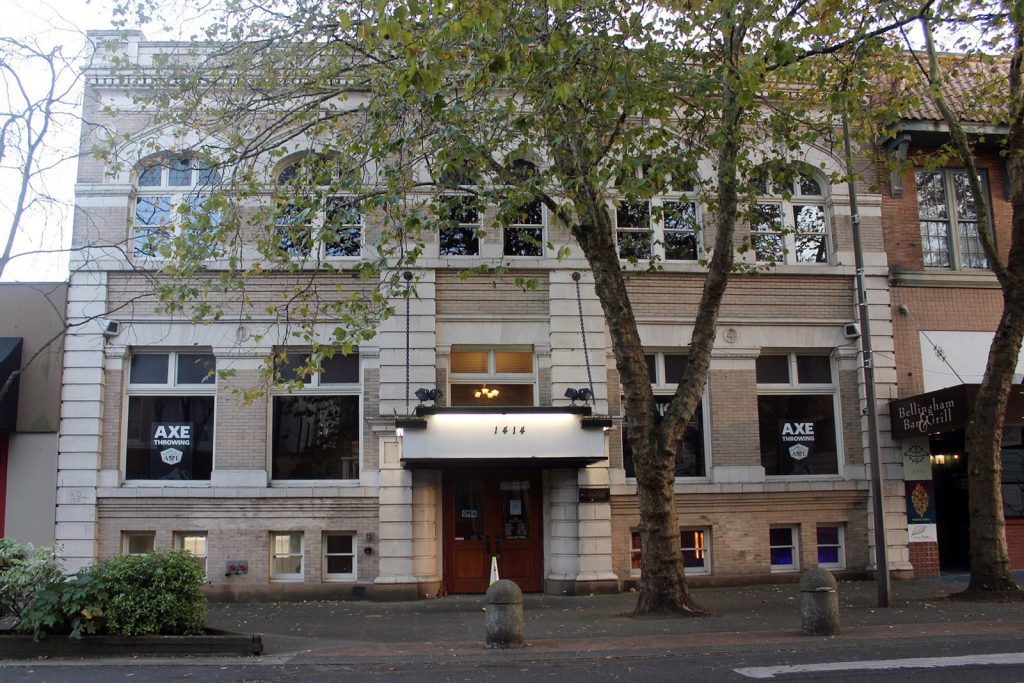
The Elks quartet sang “Auld Lang Syne” at the building’s opening ceremony. They occupied it until moving to 710 Samish Way in 1971, having remodeled decades before.
From 1942 and into the 1970s, the Odd Fellows took up residence in the former YMCA building at 311 East Holly Street. Built in 1906, this stone and brick building hosted a gymnasium the Odd Fellows rebuilt into a meeting hall.
The 1891 Knights of Pythias building at 1208 11th Street, in Fairhaven, received acclaim for its grandstanding architecture. The Richardson Romanesque structure ornamented with Chuckanut sandstone housed first-story business storefronts alongside multiple halls.
“There were a number of other groups in there all at the same time,” says Jewell. “There was a big meeting hall on the top floor of Knights of Pythias, and a smaller one on the second floor where the Masons met.”
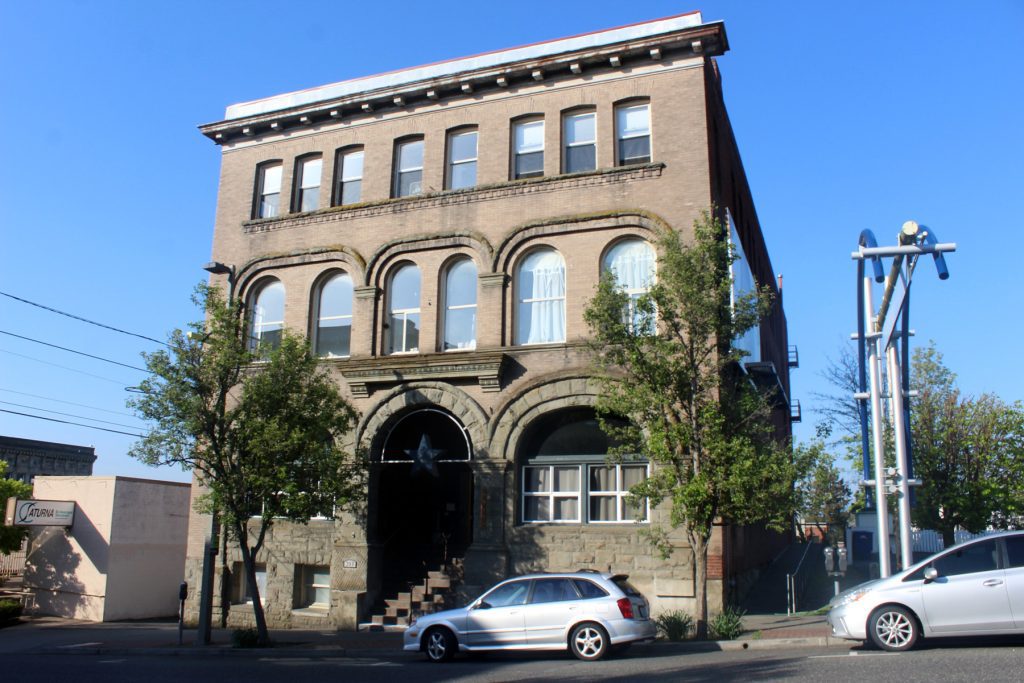
The Odd Fellows, Rathbone Sisters, Royal Neighbors of America, and Modern Workmen of America are among other groups that met in the Masons’ society halls on separate days.
By the 1920s, the Knights of Pythias moved their meetings to Leopold Hotel and the Masons built their present-day home.
“There’s also the Masonic Temple on State, which is our only building that has any type of Egyptian revival architectural features,” Jewell says.
Fraternal Organizations Today
Although many have dwindling pools of eligible members, fraternal organizations persist in Bellingham and nationwide. Whatcom Masonic Lodge # 151, Fraternal Order of Eagles #31, and Bellingham Elks Lodge #194 are among the lodges still active locally.
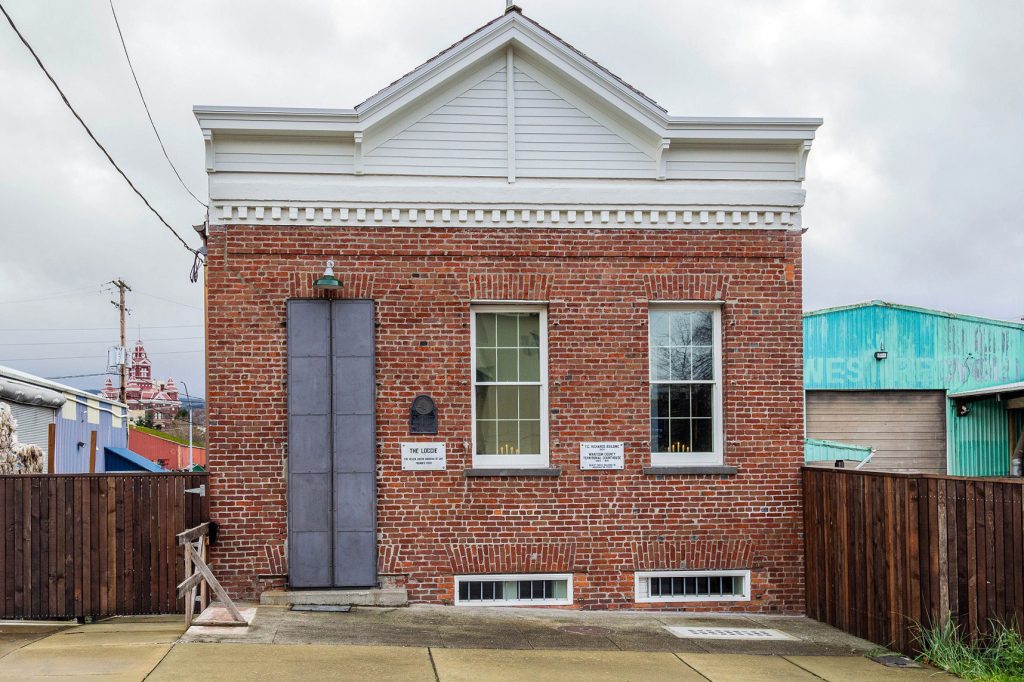
In 1992, the B.P.O.E. Building was listed on the National Register of Historic Places. Its uses over the decades have included a teenage nightclub, multiple restaurants, and the present-day Bellingham Axe. The former Odd Fellows Building now hosts The Orion, and the Knights of Pythias building hosts Colophon Café.
Despite views of fraternal organizations as exclusive, Jewell says, they address the same social functions as public-facing institutions.
“Once you get past the mystification of it — which is all the hoopla and secret handshakes and things — it’s about insurance,” says Jewell. “It’s about having some kind of social net.”

